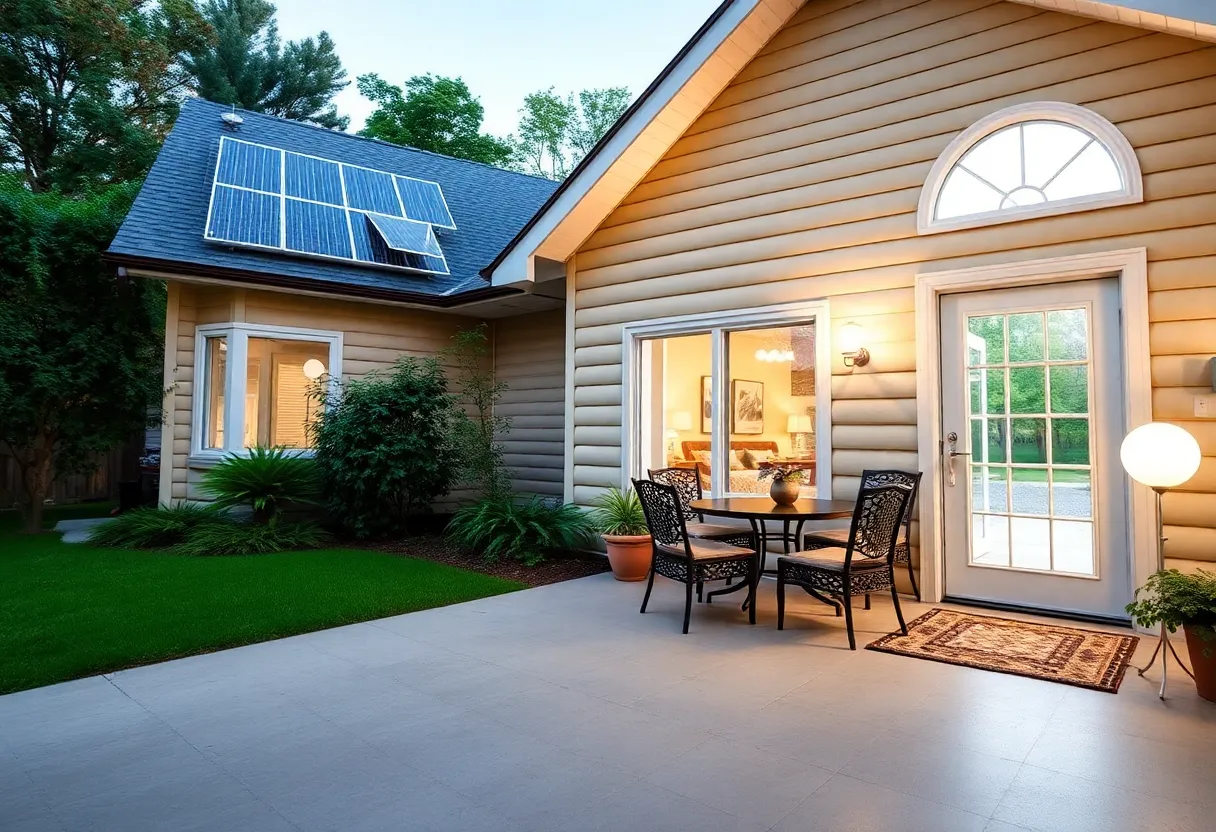How to Enhance Your Home’s Energy Efficiency: Smart Upgrades for Every Homeowner
Optimizing a home for energy efficiency is a strategic process that combines practical upgrades with modern technology. Achieving a more energy-efficient residence goes beyond reducing utility bills; it contributes to environmental sustainability and enhances overall comfort. This comprehensive guide highlights essential upgrades and innovative approaches that every homeowner should consider for maximizing energy performance.
Understanding the Fundamentals of Home Energy Efficiency
Before implementing upgrades, it is crucial to grasp the core elements influencing a home’s energy consumption. These include insulation quality, air sealing, heating and cooling systems, lighting, and appliances. Identifying inefficient aspects through energy audits allows targeted interventions that yield the highest return on investment.
Conducting an Energy Audit
An energy audit is the foundational step toward energy-efficient home improvements. It involves a professional assessment or self-evaluation of energy use patterns and inefficiencies. Key components include:
- Inspecting insulation levels and identifying thermal leaks.
- Analyzing HVAC system performance.
- Examining air infiltration points, such as doors and windows.
- Reviewing lighting and appliance efficiency.
Post-audit, prioritizing upgrades based on potential savings and feasibility directs resources effectively.
Smart Upgrades for Insulation and Air Sealing
Enhancing Wall and Attic Insulation
Optimal insulation minimizes heat transfer, maintaining indoor temperature and reducing system workload. Focus areas include:
- Adding fiberglass, cellulose, or spray foam insulation in attics, walls, and floors.
- Using high R-value materials for better thermal resistance.
Sealing Air Leaks Effectively
Uncontrolled air infiltration leads to significant energy loss. Employing sealants, weatherstripping, and caulking around:
- Doors and windows
- Utility penetrations
- Attic hatches and vents
These simple measures substantially improve airtightness, enhancing energy efficiency at minimal cost.
Upgrading Heating, Ventilation, and Air Conditioning (HVAC) Systems
Investing in Energy-Efficient Systems
Replacing outdated HVAC units with ENERGY STAR rated equipment can markedly lower energy consumption. Options include:
- High-efficiency furnaces and boilers
- Variable speed heat pumps
- Geothermal systems
Implementing Smart Thermostats
Smart thermostats enable precise control and remote management of heating and cooling. Programmable schedules and adaptive learning optimize operation without sacrificing comfort, leading to energy savings of up to 15%.
Optimizing Lighting Technologies and Usage
Switching to LED Lighting
LED bulbs consume a fraction of traditional incandescent lights while offering longer lifespan and better color rendering. Transitioning all lighting fixtures is a straightforward upgrade with significant energy savings.
Integrating Lighting Controls and Sensors
Automated dimmers, timers, and occupancy sensors ensure lights operate solely when needed. These controls reduce unnecessary energy use and extend bulb life.
Refining Appliance and Electronics Efficiency
Electronics and appliances account for a substantial portion of home energy use. Key strategies include:
- Choosing ENERGY STAR rated appliances during replacement.
- Utilizing power strips to deactivate multiple devices simultaneously.
- Implementing smart plug systems for energy monitoring and remote control.
Minimizing vampire power (standby energy draw) contributes to overall efficiency.
Enhancing Window and Door Performance
Installing High-Performance Windows
Replacing single-pane windows with double or triple-pane units equipped with Low-E coatings dramatically reduces heat transfer. Additionally, window films and shades provide supplementary insulation.
Upgrading Door Systems
Using insulated doors and installing weatherstripping prevents drafts. Thresholds and door sweeps further seal gaps.
Leveraging Renewable Energy Technologies
Solar Power Systems
Installing photovoltaic panels can offset a significant portion of electrical consumption. Properly oriented and sized systems maximize solar gain. Consider incentives and local regulations to optimize feasibility.
Solar Water Heating
Solar thermal systems provide an eco-friendly alternative for heating water, reducing energy demand from conventional systems.
Integrating Battery Storage
Battery systems enable energy storage for times when solar production is low, ensuring continuous efficiency gains and potential utility cost reductions.
Advanced Technologies and Future-Proofing
Home Automation and IoT Integration
Smart home systems monitor real-time energy usage and enable automated adjustments. These integrations facilitate proactive management of energy systems, maintaining optimal performance and efficiency.
Building Envelope Upgrades
Considering advanced facade materials, reflective roofing, and green roofing options can further improve insulation and reduce cooling demands.
Financial Considerations and Incentives
While the upfront cost of upgrades can vary, long-term savings typically offset initial investments. Tax credits, rebates, and financing programs are often available to incentivize energy efficiency improvements. Evaluate local policies and utility programs to identify suitable financial support.
Best Practices for Maintaining Energy Efficiency
Consistent maintenance extends the lifespan and performance of upgrades. Regularly inspecting insulation, cleaning HVAC filters, and updating control systems sustain efficiency benefits over time.
Educating household members on energy-conscious habits ensures ongoing savings and sustainability.
Conclusion
Enhancing your home’s energy efficiency is a multi-faceted endeavor that combines strategic upgrades, modern technology, and diligent maintenance. Prioritizing proven interventions like improved insulation, efficient HVAC systems, and smart controls creates a foundation for substantial energy savings. Integrating renewable energy sources complements these improvements, paving the way for a more sustainable and cost-effective residence.
By approaching upgrades with an informed and systematic plan, homeowners can realize enduring benefits—reducing environmental impact, lowering utility bills, and elevating home comfort. Remember, each improvement contributes to a resilient, energy-smart home ready for future innovations.
Author: STAFF HERE CLEVELAND WRITER
The CLEVELAND STAFF WRITER represents the seasoned team at HERECleveland.com, your premier source for actionable local news and information in Cleveland, Cuyahoga County, and beyond, delivering "news you can use" with in-depth coverage of product reviews for personal and business needs, local business directories, politics, real estate trends, neighborhood insights, and state news impacting the region—backed by years of expert reporting and robust community input, including local press releases and business updates, while providing top reporting on high-profile events like the Rock and Roll Hall of Fame inductions, Cleveland International Film Festival, and holiday parades, alongside key organizations such as the Cleveland Clinic, Cleveland Orchestra, and Great Lakes Science Center, plus leading businesses in manufacturing and healthcare like Sherwin-Williams and University Hospitals, and as part of the broader HERE network including HEREDayton.com, offering comprehensive, credible insights into Ohio's vibrant landscape. HERE Cleveland HERE Dayton





